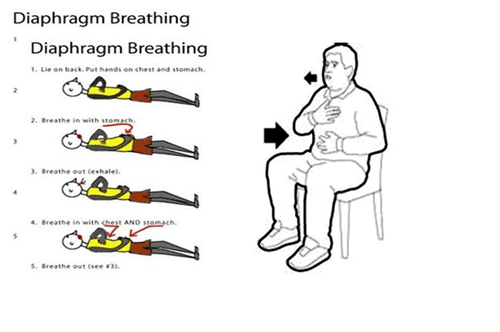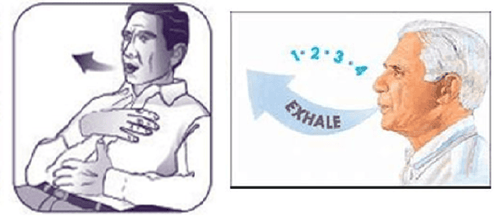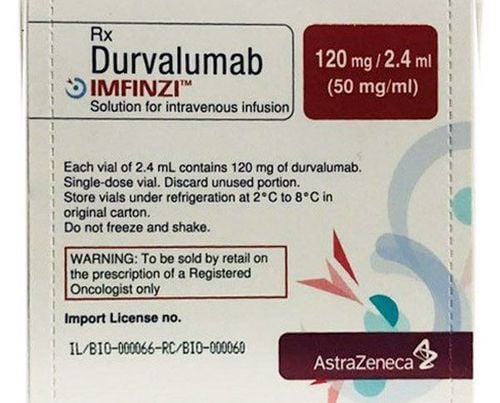This is an automatically translated article.
Methods of practicing diaphragmatic breathing and pursed-lip breathing will help patients be the most "active and active" in the methods of respiratory rehabilitation.1. What is diaphragmatic breathing practice?
One of the first steps in learning to breathe is learning how to take deep, diaphragmatic breaths. The diaphragm is a dome-shaped muscle located below the lungs. As you inhale, the diaphragm descends creating a vacuum that draws air into the lungs.Diaphragm breathing is a technique that helps strengthen the diaphragm and abdominal muscles. This will help increase the amount of air moving in and out of the lungs without tiring the chest respiratory muscles. Diaphragmatic breathing helps the patient to increase the expulsion of phlegm. In some patients, practicing good diaphragmatic breathing has been an effective method of drainage, in addition, diaphragmatic breathing also increases ventilation, increases oxygen exchange, helping patients to have less difficulty breathing. When used with pursed lips and regular practice, it enhances the effectiveness of breathing movements and saves energy. Practice diaphragmatic breathing several times a day until it becomes a habit. You can practice breathing in a sitting or standing position with your head kept straight. Once you have mastered the technique, you should practice diaphragmatic breathing both while walking and doing housework.
Diaphragm breathing technique
Lie on your back, relax your neck and shoulders, relax your whole body, and relax your mind. Place one hand on your stomach and the other hand on your chest. Inhale slowly, evenly through the nose so that the hand on the abdomen feels the abdomen rising. The chest does not move. Slowly pull your belly in with your exhalation, breathe slowly through your mouth with exhalation twice as long as inhaling, and your hand on your stomach feels concave. Practice breathing deeply, slowly, gradually increasing each day and not overdoing it. The first days in the training process should only do 5-10 cycles / turn, then relax and breathe naturally for 2-3 minutes before repeating the next round. Each session from 5 to 10 times, each day from 1 to 2 times. When you master the technique, you don't need to control your hands on your stomach and chest anymore, you can practice both in a sitting or standing position, even when walking or working.
Pinch-lip breathing technique
In patients with chronic obstructive pulmonary disease, due to the accumulation of air in the lungs, it makes it difficult for the patient to breathe. Pinch-lip breathing is a method of breathing out through the mouth with the lips pursed, creating positive pressure in the lungs to help prevent the airways from collapsing when exhaling, so air can escape more easily thereby enhancing respiratory circulation.
Please dial HOTLINE for more information or register for an appointment HERE. Download MyVinmec app to make appointments faster and to manage your bookings easily.













